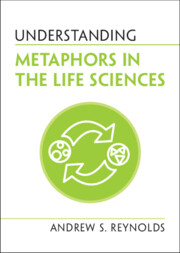Book contents
- Understanding Metaphors in the Life Sciences
- Series page
- Understanding Metaphors in the Life Sciences
- Copyright page
- Additional material
- Dedication
- Contents
- Foreword
- Preface
- Acknowledgements
- 1 Metaphors and Science
- 2 Background Metaphors
- 3 Genes and Genomes
- 4 Proteins
- 5 Cells
- 6 Evolution
- 7 Ecology
- 8 Biomedicine
- Concluding Remarks
- Summary of Common Misunderstandings
- References
- Index
8 - Biomedicine
Genetic Engineering, Genome Editing, and Cell Reprogramming
Published online by Cambridge University Press: 11 April 2022
- Understanding Metaphors in the Life Sciences
- Series page
- Understanding Metaphors in the Life Sciences
- Copyright page
- Additional material
- Dedication
- Contents
- Foreword
- Preface
- Acknowledgements
- 1 Metaphors and Science
- 2 Background Metaphors
- 3 Genes and Genomes
- 4 Proteins
- 5 Cells
- 6 Evolution
- 7 Ecology
- 8 Biomedicine
- Concluding Remarks
- Summary of Common Misunderstandings
- References
- Index
Summary
Medicine, as the old saying goes, is as much an art as a science. Its chief objective is the treatment and prevention of illness and disease. Biomedicine combines the traditional and practical objectives of medicine with modern scientific understanding of normal and pathological function in humans and other living organisms, but especially from the perspectives of molecular and cellular biology.
As earlier chapters explained, the experimental and molecular turn in biology of the twentieth century involved the adoption of an engineering perspective in two senses: (1) the goal is not simply to achieve an understanding of how living things function through passive observation, but rather to determine by intervention and manipulation of their component parts (cells and their own components) how they behave in different environments and conditions; and (2) this approach is guided by engineering metaphors that portray organisms and cells as machines that can be disassembled and rearranged in order to learn how the parts and whole function.
- Type
- Chapter
- Information
- Understanding Metaphors in the Life Sciences , pp. 139 - 163Publisher: Cambridge University PressPrint publication year: 2022

